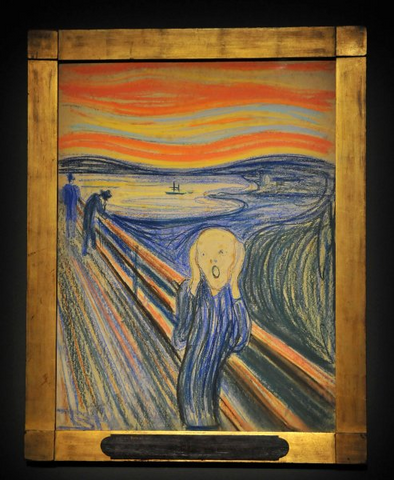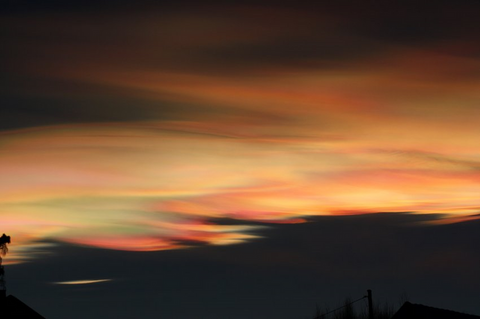At www.q-mag.org/meteorologists-explain-the-scream.html (see also https://phys.org/print412243519.html ) … we have a post on Norwegian painter Edvard Munch, and a new interpretation of what it was he actually painted on his canvas. He has posed a mystery to the art world – and made it worse by what he said at the time (which is quoted at the link). Subsequently, various theories have been aired – what was it all about? He depicted a sky filled with blood like clouds and spoke about it feeling like the whole of nature was screaming. Art historians, as is their want, and the amusement of others, interpreted the reference to a scream as something coming out of his insides, his body being turned inside out, as it were. They claimed he was painting an internal event, a scream from his inner self (psychological rather than physical). However, Munch lived in the late 19th century and people were more fixed to the ground than they are nowadays. Was he talking about some hidden deeper self, struggling to come out (a bit like the alien erupting out of an astronaut's stomach in a famous film a few years ago). He could be excused for screaming in that scenario – but people who aren't art critics and art specialists point towards his words that refer to nature screaming – not his belly, or his head. They came up with the idea that the skies in his day may have been reddened at sunset and sunrise by the amount of ash in the atmosphere following the eruption of Krakatoa in 1883. However, Munch would have grown accustomed to that – and he produced his painting nine years after the volcano erupted. Meteorologists have now come up with a new explanation, and one that has the ring of veracity – mother of pearl clouds.

 Few people get to see mother of pearl clouds as they are a rarity. They are capable of etching a strong impression on somebody seeing them for the first time. They occur when the light of the Sun, shortly after sunset or just before sunrise, shines on a thin veil of tiny crystals in the upper atmosphere. It lasts for less than an hour and then they vanish. The web of crystals form during extreme cold spells in winter when ascending currents lift small droplets of water into the stratosphere where they freeze.
Few people get to see mother of pearl clouds as they are a rarity. They are capable of etching a strong impression on somebody seeing them for the first time. They occur when the light of the Sun, shortly after sunset or just before sunrise, shines on a thin veil of tiny crystals in the upper atmosphere. It lasts for less than an hour and then they vanish. The web of crystals form during extreme cold spells in winter when ascending currents lift small droplets of water into the stratosphere where they freeze.
